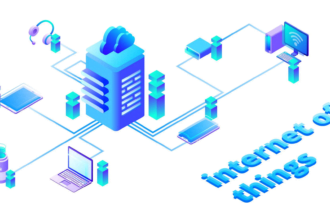The implementation of IoT, or the Internet of Things, can allow new business models and offerings for many companies, and this is why many businesses nowadays are rushing to start their IoT deployment so they won?t miss the boat.
In any IoT deployment, however, choosing between the different IoT connectivity options is always one of, if not the biggest challenge. This is why in this guide; we will discuss the different IoT connectivity options and what factors you should consider in choosing between these options.
Let us begin right away.
IoT Connectivity Technologies: Range VS Bandwidth VS Power Consumption
We can generally divide the different IoT connectivity options based on these three factors: range, bandwidth capacity, and power consumption. Cellular connectivity, for example, can cover long-range, has a high bandwidth, but requires high power consumption.
Here are some common IoT connectivity technologies that factor in these three considerations.
1. Wi-Fi
Type: short-range, high bandwidth, medium to high power consumption
Obviously, a popular connectivity option because of its wide availability and overall reliability. It is one of the most reliable options offering high-speed connectivity for smaller-scale IoT deployments where devices aren?t separated too far away from each other. Especially popular in smart home IoT deployments.
Regarding power consumption, Wi-Fi IoT is not as power-hungry as the cellular network, but still consumes a lot of power. This is why it?s best to use Wi-Fi with IoT devices that can be plugged-in.
Typical use: smart home appliances like smart doorbells, smart thermostats, smart security camera, Amazon Echo, etc.
2. Mesh IoT Network
Type: short-range, low bandwidth, low power consumption
Mesh network, or simply meshnet, is when devices are wirelessly connected to each other, and each of these devices piggybacks off each other to prolong the signal. Each device in a mesh network topology acts as a node, so each node spreads the signal a little further than the previous device to route, relay, and proxy information.
In an IoT implementation, a mesh network offers a way for us to connect many battery-powered devices that don?t require high bandwidth. A great thing about a mesh network is that when one device (one node) goes off, the rest can still function to send and receive data. Zigbee, Z-Wave, and Thread are three common examples of mesh IoT networks.
Typical use: many smaller devices including smart home appliances, also implemented as backup systems. Great in IoT systems that must not go off at all times, like lighting in farming or medical systems.
3. Bluetooth
Type: short-range, high bandwidth, low power consumption (for Bluetooth LE)
Another popular short-range IoT connectivity option. Newer Bluetooth LE consumes low power while also capable of sending a lot of data at a relatively high speed. However, it has a much shorter range than WiFi, and still offers lower overall bandwidth than WiFi.
Typical use: for smaller devices that are implemented indoors, a lot of wearables, and beacon technologies.
4. Cellular connectivity
Type: long-range, high bandwidth, high power consumption
A technology most, if not all of us are familiar with, cellular connectivity remains one of the most popular connectivity options in IoT especially for a large-scale IoT deployment. Cellular connectivity is also the only option if you want to build a global or even international-scale IoT network. There are various data plans that offer global, international, and regional IoT connectivity.
A (very) long-range option while also offering very high bandwidth, especially with the emerging 5G technology. However, it requires a lot of power, so it can be difficult to implement with battery-powered IoT devices and sensors.
3G and 4G LTE remain the most common cellular connectivity options, but there are also newer standards developed specifically for IoT, like Cat M (LTE M) and NB-IoT.
Typical Use: drones, vehicles, large-scale IoT installations
5. LPWAN (Low Power Wide Area Network)
Type: long-range, low bandwidth, low power consumption
A group of connectivity technologies that are developed specifically for IoT, LPWAN allows us to connect devices that are separated miles away?just like cellular connectivity? while using (very) low power. It is also more affordable than cellular connectivity and doesn?t require the IoT devices to have a big battery due to the low power consumption quality.
LoRaWAN, Ingenu, and SigFox are the most popular examples of LPWAN technologies, and while they aren?t yet as popular as other options here, they are emerging to be a bigger player in the near future.
LPWAN currently has several disadvantages, especially the fact that it can only cover low bandwidth, higher latency than cellular connectivity, and is less reliable in general.
Typical use: large scale IoT applications that don?t require fast/big data transmission like field monitoring, temperature measurement, etc.
6. Satellite
Type: long-range, high bandwidth, high power consumption
Regarding range, satellite connectivity is obviously the absolute winner, as satellite technology literally covers the whole world while also able to handle a very large volume of data at high speed. However, satellite connectivity is obviously the most expensive both in the initial infrastructure and periodic fees.
Typical use: in very big projects like sensors in the middle of the ocean
7. Other options
There are also other connectivity technologies that are often used in IoT implementation, like NFC and RFID.
NFC (Near Field Communication) offers a very reliable connectivity option with low power consumption, but it also covers only a very short range where the two connected devices must only be separated within inches with each other.
RFID (Radio Frequency Identification) is also a low-power technology that can send small data to an RFID reader. However, it can only transmit a very small amount of information compared to other technologies.
End Words
To summarize, we can divide our IoT connectivity options into three big categories:
High coverage range, high bandwidth, high power consumption: cellular connectivity and satellite connectivity belong to this category.
Low coverage range, high bandwidth, low power consumption: wired connection (i.e. Ethernet), Wi-Fi, and Bluetooth LE.
High coverage range, low bandwidth, low power consumption: various LPWAN solutions, and mesh networks.











